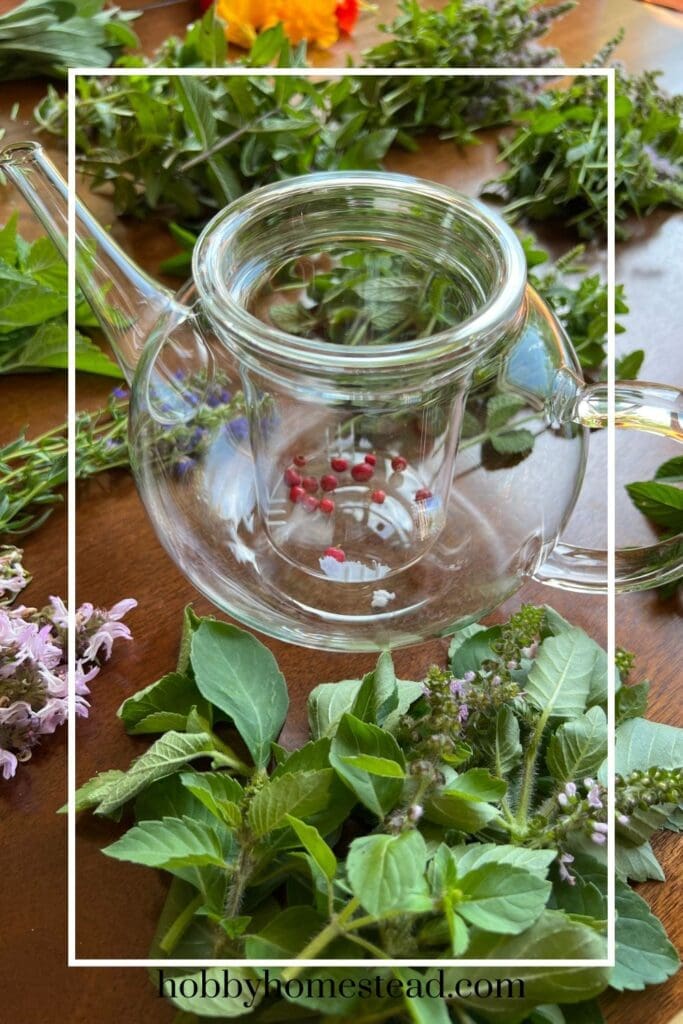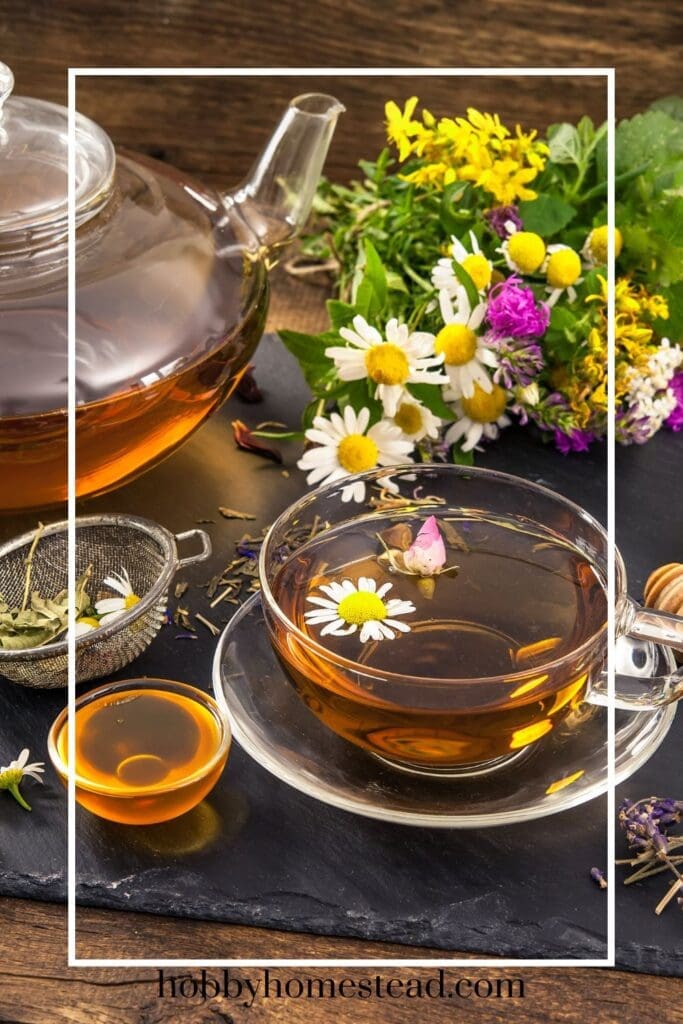Growing your own herbal tea garden in your kitchen is a fun and relaxing project. It’s also a great way to bring the joys of gardening indoors. Whether you live on a large homestead or in a small apartment, cultivating homegrown herbs for delicious tea is a great idea that can enhance your health, home, and lifestyle.
Creating your own tea garden is easier than you might think—no need for a big backyard or rare seeds. With just a little space and a few common herbs, you can grow a soothing, health-boosting collection of plants perfect for brewing your own flavorful, restorative teas.
Start Small, Sip Big
A kitchen tea garden takes up very little space and can be both beautiful and functional. This small space solution fits nicely on a sunny windowsill, countertop, or dedicated kitchen shelf. In just a few square feet, you can grow a variety of fresh herbs that offer flavor, fragrance, and health benefits with every sip.

Why Grow a Tea Garden Indoors?
Besides being easy and rewarding, an indoor herb garden ensures you have fresh herbs available year-round—especially during the colder months. There’s something comforting about picking fresh leaves of lemon balm or peppermint and steeping them in hot water for a soothing herbal tea. It’s also a fun way to involve your kids in edible gardens and teach them about growing food, plant care, and the benefits of medicinal plants.
Favorite Tea Herbs to Grow Indoors
Here are some easy herbs and tea plants perfect for a kitchen garden:
- Lemon Balm (Melissa officinalis). A perennial herb that’s part of the mint family, lemon balm has a citrusy herb flavor and is great for soothing a sore throat and lowering blood pressure.
- Lemon Verbena (Aloysia triphylla). Native to South America, this fragrant herb loves full sun and provides a fresh, clean lemon scent for homemade tea blends.
- German Chamomile. With its tiny yellow flowers, this member of the daisy family is calming and often used for sleep support and digestion.
- Bee Balm. A striking addition to your indoor or raised garden bed, bee balm is part of the mint family and has a mild citrus and mint flavor.
- Holy Basil (Ocimum tenuiflorum). Also known as tulsi, this medicinal herb is revered for its adaptogenic properties and unique clove-like aroma.
- Peppermint & Chocolate Mint. These kinds of mint thrive in partial shade or direct sunlight and are perfect for both hot and iced tea.
- Lemon Basil and Lemon Thyme. Milder than other mints, these citrusy herbs bring brightness to your tea.
- Rose Petals & Rose Hips. Rich in vitamin C, rose petals and hips are not only beautiful but beneficial.
- Anise Hyssop. With its mild anise flavor, this low-lying plant brings a sweet note to your tea recipes.
- Red Clover. Traditionally used for medicinal purposes, red clover grows easily and adds color to your blend.
- Lavender (English Lavender). With its calming fragrance, it’s great for bedtime tea blends.

How to Set Up Your Indoor Herbal Tea Garden
Choose a Sunny Spot
Herbs need 4–6 hours of sunlight daily. A sunny day in a south-facing window provides ideal conditions, but you can supplement with grow lights if needed.
Use Good Drainage
Plant in pots with holes and use well-drained soil like sandy loam soil to prevent root rot.
Select the Right Herbs
Mix perennial herbs like lemon balm with annuals you can rotate through the growing season.
Keep It Beautiful
Choose decorative containers, add plant labels, and arrange herbs by height and color to create an aesthetically pleasing kitchen garden.
Watering, Harvesting, and Preserving
Water herbs when the top inch of soil feels dry. Harvest young leaves often to encourage bushy growth. To preserve your harvest for future use, air-dry or dehydrate herbs and store them in an airtight container in a cool, dark place.
Making Tea from Your Herbs
To make a cup of your own herbal teas, simply boil water and steep a small handful of fresh leaves or a teaspoon of dried herbs for 5–10 minutes.
Try blending different herbs to create your own unique tea recipes. Add cinnamon sticks, rose petals, or edible flowers like calendula for extra flavor and beauty.

Teaching Kids to Grow a Tea Garden
Growing tea plants is a fun way to get children involved in gardening. Let them pick out seeds, decorate pots, and water the plants.
Kids can learn about plant lifecycles, taste different herbs, and enjoy sipping their creations. It’s a great time to introduce them to concepts like sustainability, healthy living, and even a little botany.
Herb Garden Tips for Every Season
- In late spring, transplant herbs from indoors to garden beds or raised garden beds.
- In winter months, move pots inside or keep growing in a warm kitchen windowsill.
- In milder climates, perennial plant varieties can survive year-round outdoors.
- Use different methods to preserve your favorite tea herbs for the next year.
An indoor herbal tea garden is a low-effort, high-reward way to bring beauty, health, and flavor into your everyday life. Whether you’re calming a sore throat with lemon balm tea or enjoying iced tea with pineapple mint on a sunny afternoon, your own tea garden will bring joy for a long time to come.
So, find a sunny windowsill, pick a few favorite herbs. And start your journey with delicious tea made from your own garden. No matter the size of your space.


